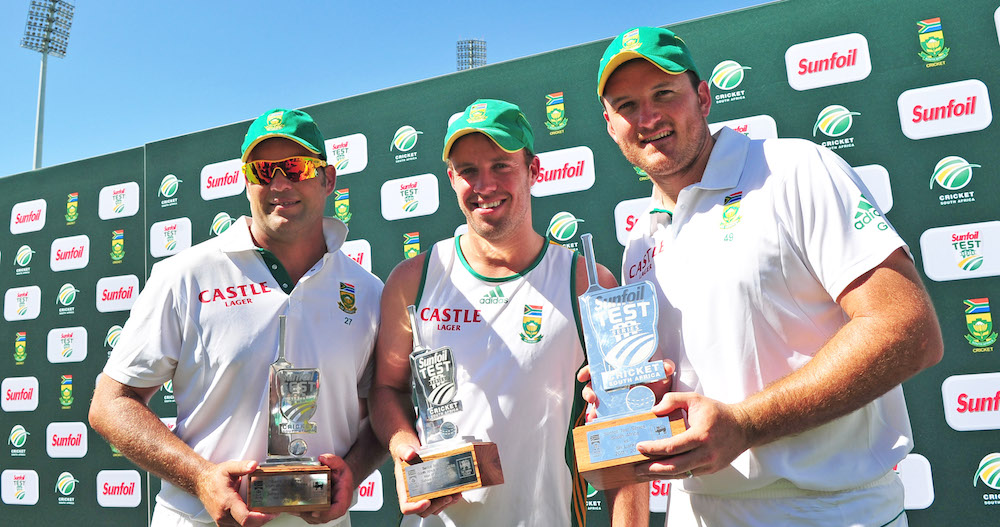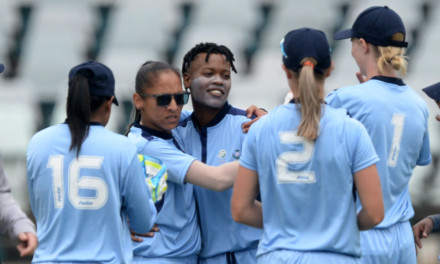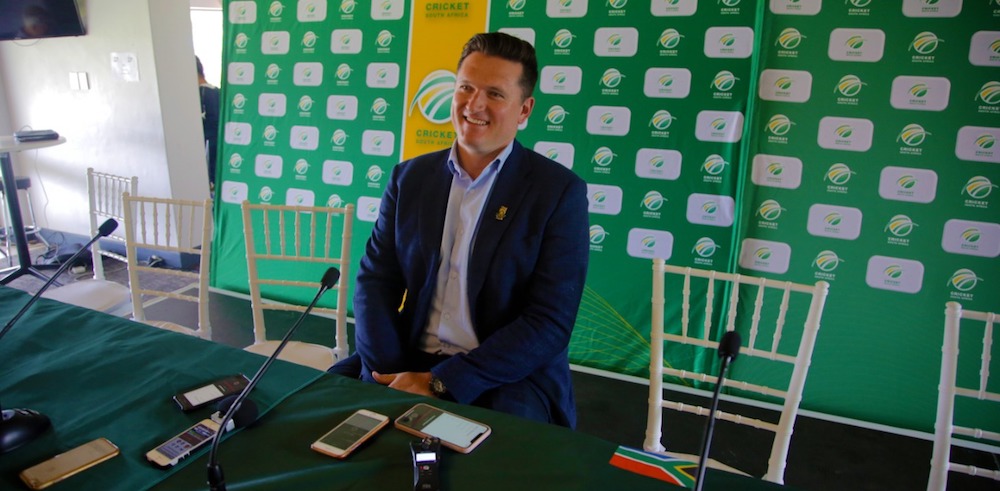“All of us can agree there’s no better feeling than bumping the Aussies.” – Faf du Plessis after South Africa won the three-Test series in Australia by a margin of 2-1.
One of the most fascinating aspects of international cricket is the prevalence of home and away fixtures in all three formats of the game.
While teams have a distinct advantage when they play on home turf, it is a colossal undertaking to win a series in overseas conditions.
Therefore, this issue delves deeper into important considerations for teams to win overseas.
Renowned international cricket coach, Richard Pybus, spoke to Cricket Fanatics Magazine to reflect on what teams need to do to succeed overseas.
Pybus assigns significant value to data analysis.
“The lovely thing about coaching in today’s age is that we get really good data. We need to break down the data of what we need to be producing in terms of performance across the different subunits of the team to be able to put us in a situation where we can go there and win a series.”
According to Pybus, the data determines the types of players needed to win in those conditions.
“If you’re playing in England in spring, it’s very different to playing in Chennai in 40 degrees heat on turning wickets. The units of your team are really, really important.”
In an ideal scenario, Pybus would want the sort of depth in a squad that would allow the team to be competitive in all conditions.
“All of your planning is long-term. You don’t ever want to be reactive when series are coming up.”
Interestingly, Pybus pointed out that the batting unit of a squad typically remains the same, irrespective of conditions; it is the bowling unit that changes depending on the demands of the conditions on offer.
“Your batting unit is pretty much always going to be your batting unit, that’s not really going to change. Your bowling unit will change, obviously. India to New Zealand are very different bowling units, relative to what you’re going to need from seam to spin.”
Further, it is critical for team managements to carry out in-depth analyses of the opponents teams will come up against.
Pybus explained, “Where are the weak links in the opposition? What are the core strengths of your opposition? I’m planning for that. And now you got to be able to control the game first.
“That’s the first thing you’re planning for – it’s being able to control it, hold it, build up pressure; all the key opportunities during the game from the new ball and the breaks in play.
“So nowadays, there’s a lot of talking about matchups – that’s really just domain for what we would have been doing forever. But what are the best combinations against the different subsections of the team that you’re playing against?”
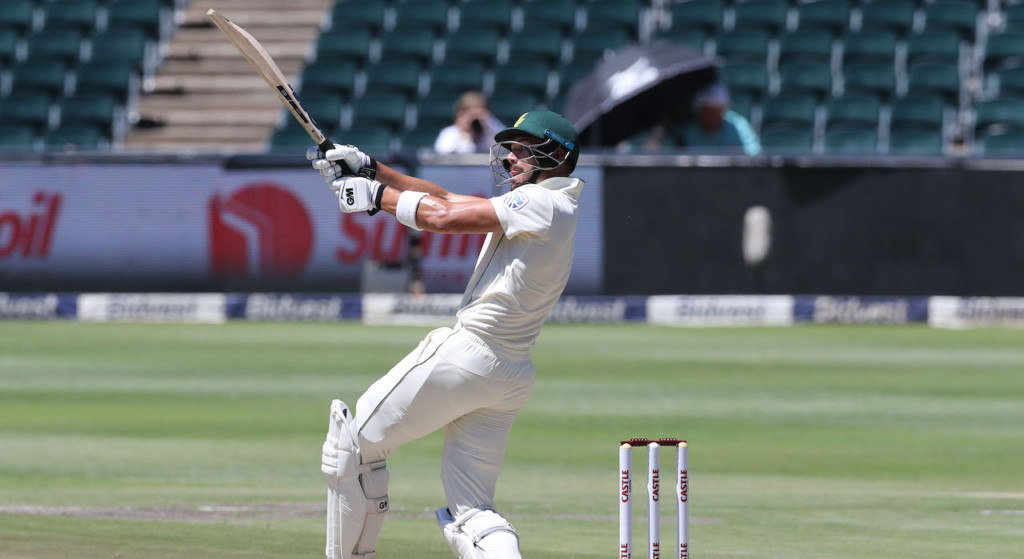
With advances in sports science and medicine, Pybus revealed that team managements have started accounting for externalities such as travel and climate conditions.
“When players from the subcontinent would come somewhere like England in the spring or early summer, that’s quite a challenge. I remember with Pakistan players is that you could be playing in less than 20 degrees Celsius and you’ve got cold fingers, cold hands, and cold feet.
“It takes some time to get into it. So just managing that awareness, making sure you’ve got the right kit. That might sound like it’s obvious, but I can definitely say with cricket boards in the past that quite often you think you’d be on tour but have the wrong kit for those conditions. Making sure that if you’re in spring in England, you’ve got enough sweaters and thermals.”
When Pybus was Director of Cricket in the West Indies setup, he recalled the emphasis on playing numerous warm-up games to ensure that players had sufficient time to acclimate to weather and ground conditions.
“When I was chatting with our selection panel in the West Indies, one of the key things was having enough games for players to get into playing in conditions overseas. We made it policy so that when we arrived, we built it into the series. Players would have the best opportunity to be acclimated and be ready to play the first Test.”
However, the busy international cricket calendar over the last 15 years has limited the possibility of multiple warm-up games, which in turn, has had bearing on series results when teams travel overseas.
“A lot of touring sides lose the first Test and you know you’re behind the game straightaway. So ideally, you want to dominate that first Test and set the tempo for the series.”
Dominating the beginning of a Test series, according to Pybus, also depends on the cricket board’s priorities and planning in the lead up to a marquee series.
“It’s all about the quality of the planning and board priority. What will typically happen is that the team goes for a big series overseas. Yet, the planning has been very poor. Whichever administrators were involved, they didn’t look at the sequence of events going up to a big series in aspects such as rest and recovery.”
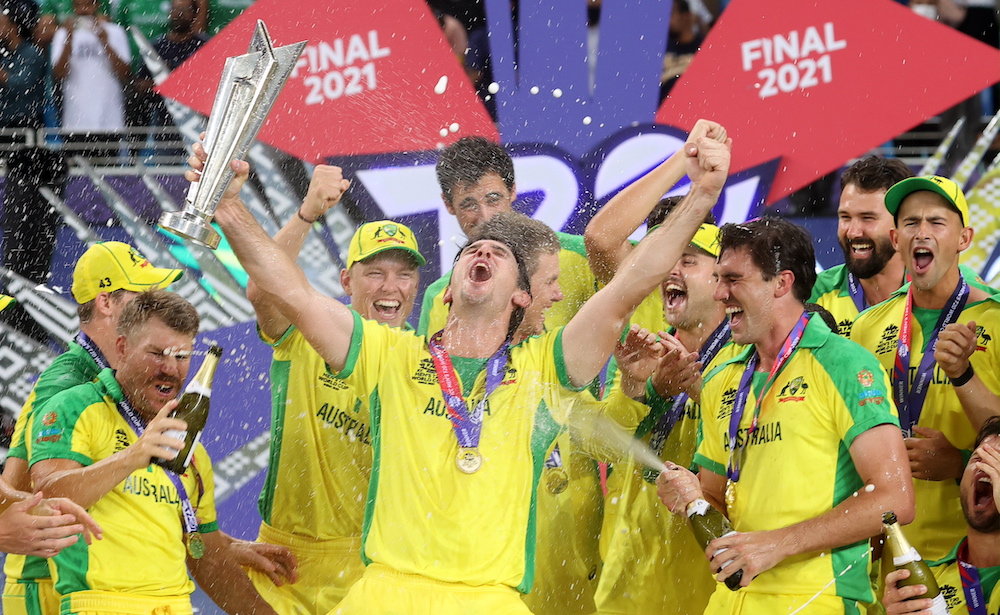
Offering Australia’s example, Pybus provided rich insight into their tactics to ensure the team had the best chance of winning the series.
“One of the things that Australia have done so well historically in the past is that for an incoming series, they take you to Perth, which is on the other side of the continent, to play the odd tour game against the Western Australian Prime Minister’s XI and then you might have a game against Western Australia.
“Then, they fly you across the continent. Bearing in mind, you’ve already traveled across time zones, then you’d have to travel from Perth to Queensland, which is a couple of time zones, and then you’d have a hit out in Queensland, and you’ve been to the first Test.
“There’s absolutely no accident that the Gabba would have been a fortress for them, which would set up every single series they play. They want everything loaded in their favour, and of course, that is 100 percent right.
“So touring sides would have no real wriggle room because that is the historical structure of the fixture. But when you look at the record of the Gabba, you understand exactly why and of course, when you go one-nil down in Australia, it’s really tough to come back.”
It is often said that for teams to win Test matches, particularly overseas, they need to be able to pick twenty wickets. To do that, selectors need to be on the lookout for bowlers who can help the team get twenty wickets.
At present, teams across the world are challenged by the scarcity of fast bowlers who can clock speeds of 150 and above.
Asked about how teams can find and nurture express pace bowlers, Pybus gave relayed an anecdote from his time as a consultant for one of the franchises in the South African domestic setup.
“A franchise asked me to go and do some work with them. I went out and I was looking at some talent across the country. I went to the premier age-group tournament in South Africa. I was watching one-day cricket because the cricket was all one-day cricket or T20 cricket at that stage.
“There was no longer four-day matches or you might play a two-day game at U19 level within a week. The bowling was literally all sort of medium-fast or at best, fast-medium, but mainly medium-fast with ring fields. It was unbelievably boring.
“You can see that the cricket culture, unfortunately, in schools cricket had moved towards a more defensive mindset. A more let’s run up and bowl length, let’s ask the opposition to hit the ball over the ring. So, there was definitely not an offensive mindset.
“The thing about bowling quick is that fast bowling has got to be encouraged for quicks. The teachers at school have got to encourage the governing bodies to encourage that (fast bowling).
“South Africa would be one of the great homes of fast bowling and when you see there is a culture change, you’ve got to go back out and reinvigorate the fast bowling culture.”
Pybus explained that scouts needed to travel across the country to set up programs that would identify fast bowlers.

South African great, Makhaya Ntini, was discovered by Greg Hayes around the time Pybus was coaching the Border cricket team. Ntini hailed from a rural part of the Eastern Cape and was found by Hayes, who had a long history of nurturing players from rural South Africa.
Ntini had serious competition at the time, for there were a number of bowlers gifted with the ability to bowl at express pace, but it was Ntini’s “character, temperature, and desire” which led him to represent the national team.
Further Pybus discussed, “When I was up at the Titans, we had a young lad that people might have heard of – Dale Steyn. Dale came from Phalaborwa, which is on the south coast border with Zimbabwe, and that’s a good five hours outside of Pretoria. It’s a little mining town.
“So Dale is not coming from an orthodox pathway, where he’s been at some nice, big established school. He has been playing cricket out in the mining town. I remember saying to Dale when he was playing for his province, which would be one of the smaller provinces, ‘Dale, did anybody from Cricket South Africa come up and speak to you? Does anybody scout here? He said ‘nobody.’ Can you imagine?”
Elaborating on Steyn’s story, Pybus continued, “Before Dale, the fastest strike-rate in the history of cricket was Waqar. Then Dale came, and he and Waqar are very similar type of bowlers. When you look at his strike-rate and volume of wickets, the greatest bowler of all time is Dale Steyn.
“So you got a kid who has not been scouted at any level up to the age of 19. The provincial setup would have seen him, but the national body hasn’t seen him, and nobody had a conversation with him.
“We had the joy of watching the Dale Steyn era because he decided that he wanted to come for a trial at the Titans Cricket Academy, and he managed to get a lift down in time. Somebody gave him a lift for five hours in the car to come down and bowl. I spoke to the assistant coach and captain at the time, and I said, ‘What happened that day?’ They said they saw the skinny little kid run up and the two of them just looked at each other.
“At the time, the captain was a guy called Gerald Dros and the assistant coach was a former fast bowler called Chris van Noordwyk. The two of them knew what they were looking at, but nobody from the national body had identified him.
“If Dale had not decided to get a lift down to come that cricket academy, we may never have heard of him, and that really is not a compliment to the national body when you’re not scouting that type of talent.”

From a batting perspective, Pybus used former South African captain, Faf du Plessis’ example to illustrate how his long journey at the domestic level and in the county circuit in England equipped him with the technical foundation and mental strength to succeed at international cricket.
By the time Du Plessis made his ODI and Test debuts, it was evident that he had the tools required to become a mainstay in South Africa’s red-ball and white-ball teams.
“When I worked with the Titans. Faf would have been 20. He was unbelievably passionate and determined really. I think a great motivation is that his great childhood friend, AB (de Villiers), just snuck a little bit of a lead on when he got pulled up into the South African set-up.
“Faf had a longer journey. And I think Faf became very determined. Also, we had a really serious batting lineup at the Titans. Faf wasn’t playing in the first team when I arrived. He really had to go and do his hard yards to go and play plenty of second-team cricket, get the hundreds, and earn the opportunity to play first-class franchise cricket.
“Slowly but surely, he started to put his game together. He just worked incredibly hard. Other than his own desire to be able to achieve because he was very clear where he wanted to get to. He wasn’t remotely close to South Africa, but he was going to play for South Africa and he had already decided in his mind that he was going to captain South Africa.
“When AB went flying off and he’s playing for South Africa, Faf would probably have had to play about another five years of cricket before he caught up and got into the national team with AB.
“That’s why I think when Faf came into the international setup, he really understood his game. First-class to international cricket is a transition, but it’s less of a transition when you’ve got a really good, solid technical setup.”
Richard Pybus’ extensive experience as a cricket coach across the world points to planning, data analysis, and effective scouting as being essential to teams winning overseas on a consistent basis.
The current trend in international cricket is that teams are dominating at home but losing overseas. For teams to reverse this trend, they would probably need to implement some of the insight Pybus has imparted through this article.

